Best Hikes in Madeira You Can Reach Without a Car
Madeira is one of the best hiking destinations in Europe. This stunning archipelago on the Atlantic Ocean boasts the most spectacular nature, magnificent mountains, and treks with dramatic views that will take your breath away. Hiking in Madeira is one of the best things to do ever, and hiking in Madeira without a car is totally possible.
Most travel guides recommend renting a car while traveling and hiking around Madeira. But it’s definitely not necessary. While some trails in Madeira can only be reached by car or organised tour, definitely not all of them. So don’t think that only because you are not willing to rent a car, you cannot visit or hike in Madeira.
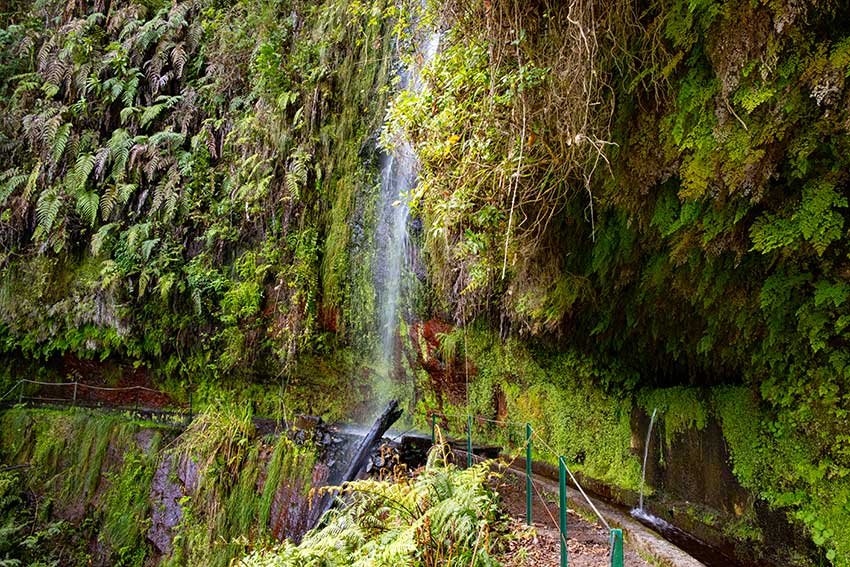
So if you are travelling to Madeira and are excited about all those incredible hikes awaiting you, I get it! Madeira is spectacular!
There are plenty of amazing routes you can access by public transport—and I’m living proof! I spent a glorious six weeks on this island and managed to reach almost every corner, mostly by bus, occasionally by foot, and okay… a taxi or two, but this was mostly due to my poor planning and trouble-prone actions. 😅
So without further ado, here is my guide on the best way to hike in Madeira without the car!
This blog is supported by you. The content, written with love and passion, will always remain free. My posts may contain affiliate links, which means that I will receive a small commission if you purchase the product or make a booking through one of my links. I will never recommend or promote a product I don’t believe in or haven’t used myself. This way, you support my work at no extra cost to you. Thank you!
What are hiking trails like in Madeira?
There is a reason why Madeira is called the Hawaii of Europe!
Hiking in Madeira is unlike anywhere else in Europe. The island’s trails range from gentle walks through ancient forests to heart-pumping climbs across jagged ridgelines—and the diversity is seriously next level. Thanks to Madeira’s dramatic terrain, you can go from a misty mountaintop to a sun-drenched coastal cliff in the same afternoon. And because of the island’s volcanic origins, the scenery is often wild, raw, and truly jaw-dropping.
There are two main types of trails here: Levadas and Veredas.
Levadas are relatively flat paths that run alongside Madeira’s old irrigation channels. These are usually shaded, immersive, and perfect for slow, scenic walks through forests, tunnels, and valleys.
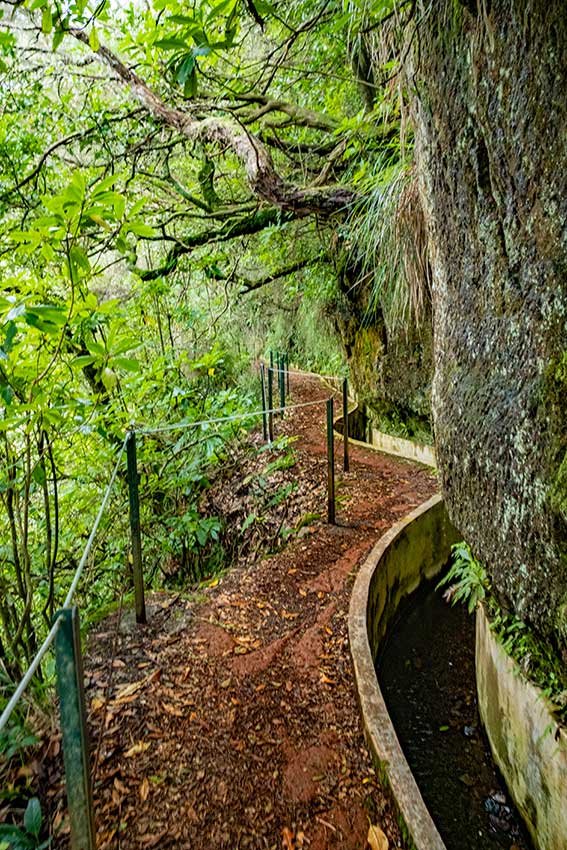
Those irrigation channels were created to carry rainwater and natural spring water from the north and west of the Madeira island, where the climate is more humid and precipitation is more frequent.
The Portuguese started building Levadas in the 16th century to provide water to the agricultural regions. Ever since, this incredible network of over 1,400 kilometres of channels has continuously been built, with the most recent built in the 1940s.
Building the Levadas was often very difficult, and men frequently had to hang on ropes over steep mountain slopes to dig the channels.
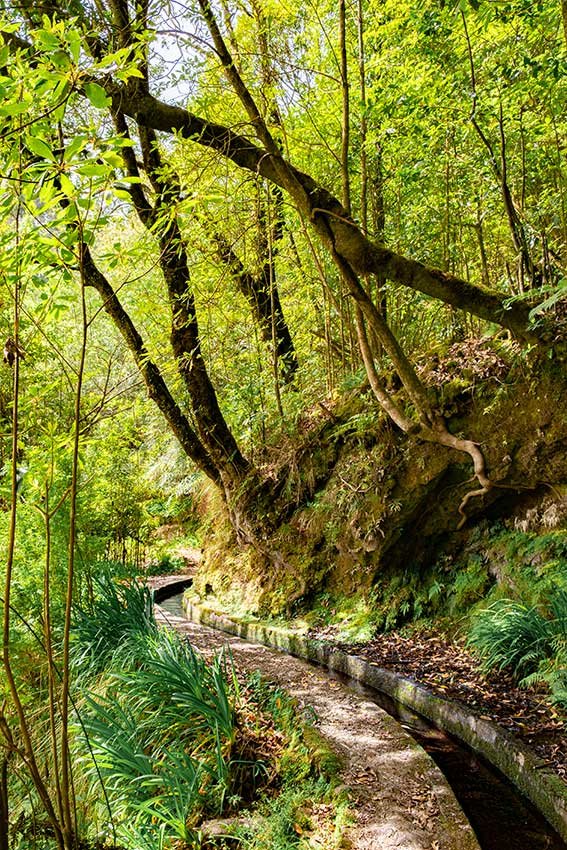
Until these days, Levadeiros walk these paths every day to repair and manage the water distribution.
Levadas, apart from providing water for irrigation and agriculture, are also used to generate power, which makes up nearly 40% of the island’s power source. In fact, around 50% of Madeira’s electricity consumption comes from renewable energy sources.
Veredas, on the other hand, are more traditional hiking trails—often steeper, more exposed, and leading to epic viewpoints or mountaintops
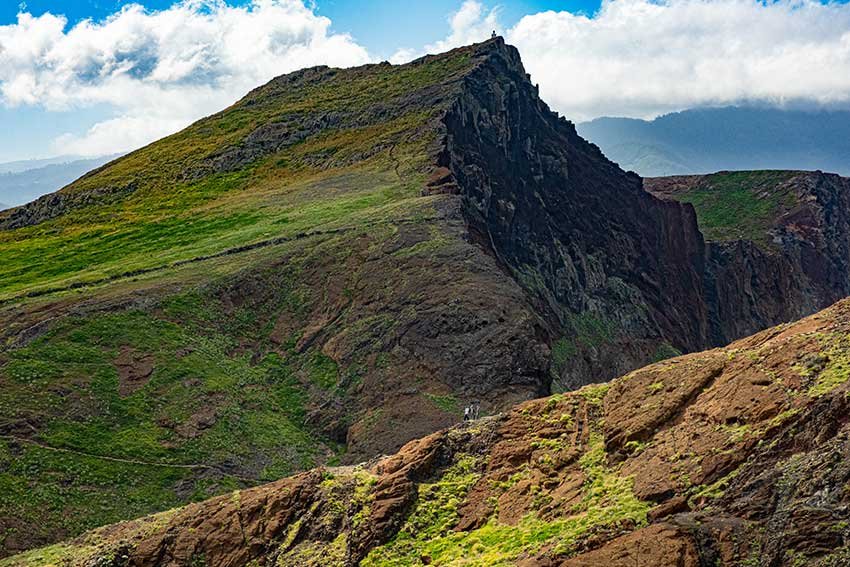
Vereda means ‘trail’ in Portuguese (as well as in Spanish). This is a general term for a hiking trail in Madeira, so every trek that is not a Levada will be called a Vereda. You will find all types of veredas in Madeira, coastal walks, mountain ridge walks, Laurisilva forest hikes, and so on. All are stunning and unique in their own way.
How to use public transport in Madeira?
There are few different bus companies covering various parts of the country.
Navigating different bus companies and their timetables gets highly confusing for the majority of visitors. Don’t get discouraged if it takes you ages to figure it out.
The yellow buses of Horários do Funchal, marked with the GIRO symbol, serve the Funchal urban areas.
The CAM (formerly SAM buses) serve the east of the island, including stops in Porto da Cruz, Santo da Serra, Machico, Santa Cruz, Caniço, and Madeira Airport.
Rodoeste (busses with red stripes like on the above photos) is the bus line that operates between Funchal and all the municipalities located on the western side of Madeira island. Those buses will take you to Porto Moniz, Ponta do Pargo, Ribeira Brava, among many others.
Here you will find the schedule for Rodoeste.
This is just general information for you because next to each hike I will write about, I will provide all the essential information regarding the bus company and the bus number.
In case a taxi is a necessary option, I recommend using Bolt. The app works very well in the southern part of the island and is much cheaper than yellow taxis.
Where to stay to reach the best hikes in Madeira without a car?
If you travel around Madeira without a car, where you stay will make it either really easy or a bit harder to explore the island.
You can find buses departing from here to most destinations. You will also find the majority of affordable accommodation options here, including some great hostels.
The two hostels really worth mentioning are Santa Maria Hostel and 29 Madeira Hostel. I stayed in both and I really enjoyed it. It was by far the cheapest quality accommodation, and I made some great friends in both hostels. A couple of the best hotels to stay in Funchal are Alexia Room for budget travelers and Quinta Da Penha De França for those looking for a very comfortable stay.
Machico is a good place to stay for a few days. You can chill, laze by the beach, and take a couple of the greatest hikes from here – Vereda Ponte do São Lourenço and Vereda do Larano. However, there are no hostels here. I stayed 10 days in Machico, so I rented this apartment. I was given a good deal as I stayed for a bit longer, and it was a good way for me to catch up on some washing (there was a washing machine) and some blog work.
Both are small fishing villages with great beaches, and both are pretty close to some of the great hikes like Levada Nova or Levada das 25 Fontes.
I didn’t stay in either, but I went there for a day and made some bus changes as well. It is not a great place to travel to the rest of Madeira from, however. Buses exist, but not in abundance.
The area is lovely, though, so if you don’t mind spending a few days chilling in a beach town and taking some local hikes, then go for it! And if you feel super lazy, just book yourself a guided Levada walk. because why not!
Stay safe while hiking in Madeira!
Always check the weather forecast and trail closures. During heavy rains, there are many landslides. If the trail is closed, there is a reason for that!
Be prepared! Wear good hiking shoes or hiking sandals, and carry a rain jacket and warm fleece in case the weather changes. Remember, mountains are unpredictable. Always carry enough water and some snacks in case your hike ends up being longer than you planned. Things happen; be ready.
Dress appropriately for the season. Summers are hot in Madeira, so wear appropriate hiking gear for hot weather.
If you hike in the winter, sometimes there is snow up at the peaks in Madeira. The best way to dress for the weather like this is to layer up.
Be sure to have enough mobile data on your phone, credit to call in case of emergency, and carry a power bank. I also took my headlamp with me on a couple of hikes, and believe it or not, it did come in handy as there are quite a few tunnels to walk through.
Leave no trace! Respect Mother Nature, enjoy your hiking trail, but be sure to leave it as you found it.
Best hikes in Madeira you can do without a car
Levada do Furado (PR10)
Levada do Furado was the very first levada I hiked in Madeira. I actually took advice from Hit the Road Madeira and followed their tutorial video. They recommend combining Levada do Furado with Vereda dos Balcões (see below) into one beautiful 4-hour hike.
It’s the perfect walk to start your trip with. You’ll get used to the idea of walking along a levada and experience some fantastic scenery with breathtaking viewpoints. The best part—it’s very straightforward to reach by bus.
Levada do Furado is truly one of the most accessible hikes in Madeira you can do without a car.
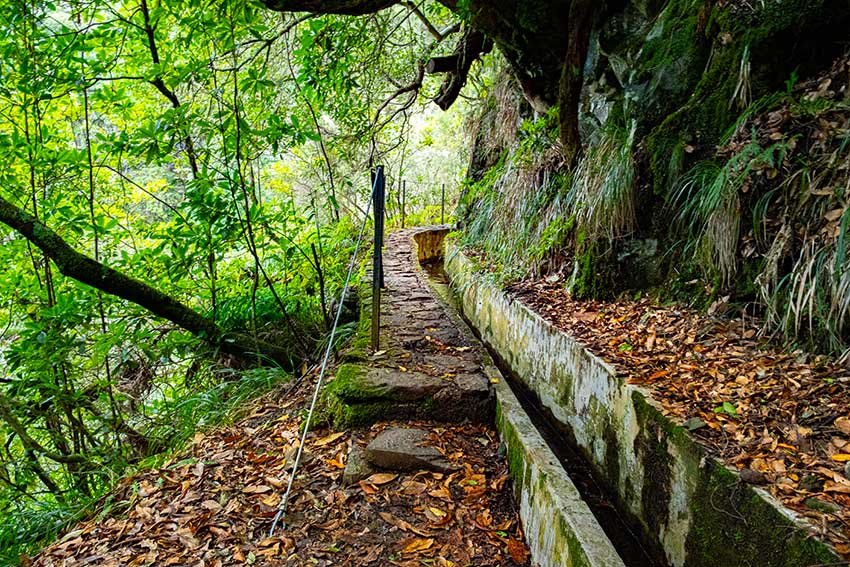
How to get there by bus
Take bus number 56 (former SAM bus company, now CAM) from Funchal Teleférico (Cable Car Station in the Old Town) towards Santana. Get off at Ribeira Frio, where the trail begins. The hike ends at the Portela Viewpoint, where you can catch the return bus to Funchal. It’s best to take the first bus in the morning, which currently leaves at 8:15. This gives you plenty of time to complete the levada and make it back in time for the bus from Portela.
Another option, also recommended in the Hit the Road Madeira video, is to get off one stop after Ribeira Frio, by the Faisca Bar. From there, you can walk to the Miradouro dos Balcões via the Vereda dos Balcões trail—it takes only about half an hour. From the viewpoint, you can follow the signposted path back towards Ribeira Frio and then continue on with the Levada do Furado.
Practical info
- Bus number 56
- Duration from Funchal: about 50 minutes
- Ticket price: €3.35
Levada do Furado overview
Levada do Furado is 11 km long, relatively easy, and one of the oldest state-owned levadas in Madeira. It starts at 880 m elevation in Ribeira Frio, where you’ll also find the famous trout pond.
The trail takes you along the Ribeira Frio valley, surrounded by the magnificent Laurisilva forest, with occasional glimpses into the deep valley below. Along the way, you’ll cross a few rivers, all easy to pass.
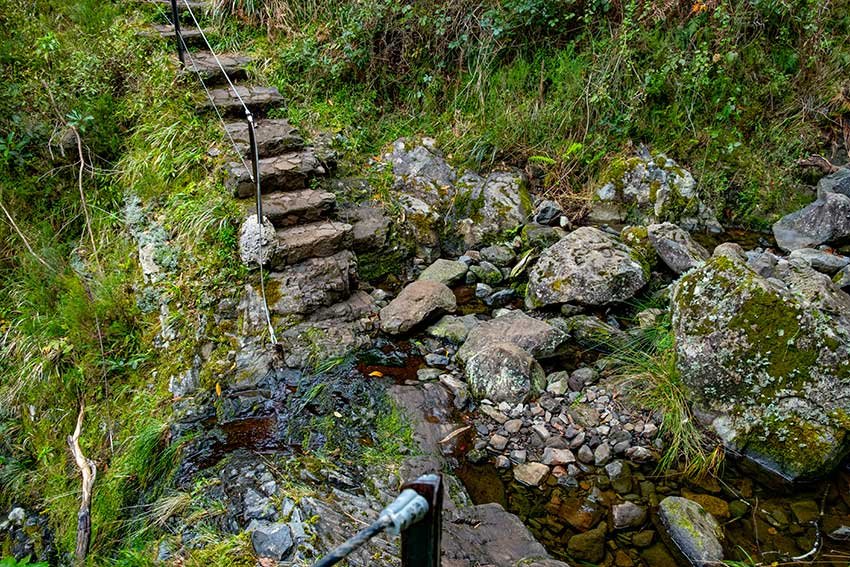
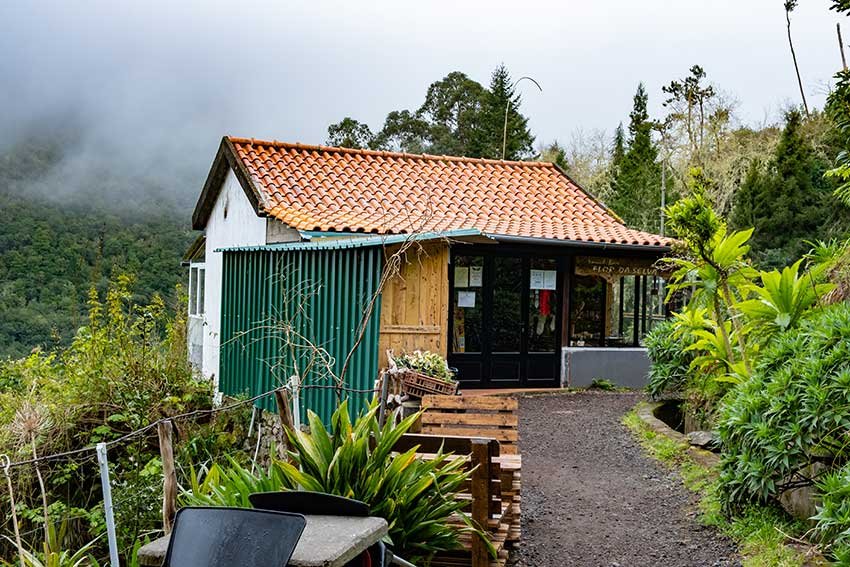
As you approach Portela, you’ll be rewarded with panoramic views over the coastal village of Porto da Cruz and the striking rock formation of Penha de Águia. It’s a stunning levada walk that completely hooked me from the very beginning.
Vereda dos Balcões (PR11)
Vereda dos Balcões is a short and easy walk that follows the Levada da Serra do Faial and leads to the Balcões Viewpoint, offering magnificent views over the Ribeira da Metade valley.
As I mentioned above, the best way to do this walk is to combine it with the Levada do Furado hike; otherwise, it’s a relatively short walk following a long bus journey. That said, the viewpoint itself is absolutely worth it. If you’re considering combining both hikes, make sure to read the Levada do Furado description above.
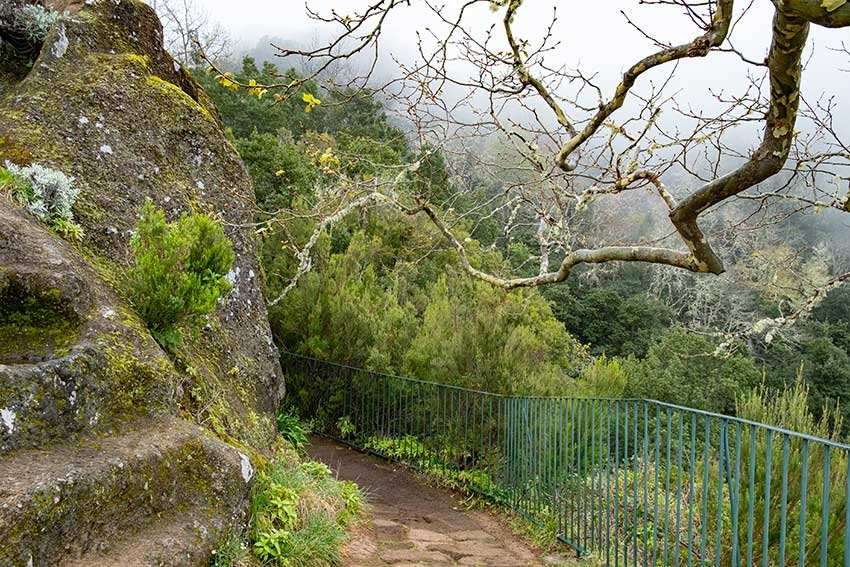
How to get there by bus
Take bus number 56 from Funchal towards Santana. You can get off at Ribeira Frio and walk about 1.5 km (there and back) to the viewpoint. Alternatively, get off at the next stop by the Faisca Bar and reach Vereda dos Balcões from there. From this point, you can turn onto the path signposted ‘Ribeira Frio’. At the end, you can either catch a bus back or continue straight onto the Levada do Furado, which I definitely recommend.
Practical info
- Bus number 56
- Duration from Funchal: about 50 minutes
- Ticket price: €3.35
Vereda dos Balcões overview
Vereda dos Balcões is a short and very easy walk, often included in guided island tours. On its own, it takes only about an hour to complete, which is why I suggest combining it with a longer hike if you’re coming by public transport.
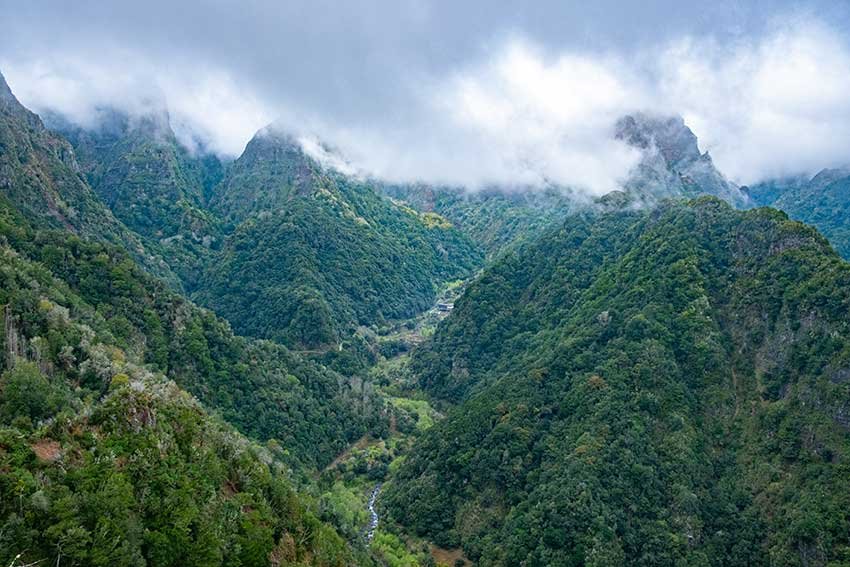
The trail ends at a fantastic viewpoint that’s truly worth seeing. It was actually the very first miradouro I visited in Madeira, and I was completely mesmerised. Not only was I lucky enough to have it all to myself (which doesn’t happen often), but the views were dramatic, and the surrounding nature made it unforgettable.
Vereda da Ponta de São Lourenco (PR8)
If you only have time for one hike in Madeira—make it this one!
Vereda da Ponta de São Lourenço is one of the most breathtaking trails on the island and absolutely unmissable.

The hike takes you along the easternmost point of Madeira, following a long, narrow peninsula with dry, rocky terrain and dramatic cliffs. The landscape here is completely different from the lush greenery you’ll find elsewhere on the island, which makes it even more unique. The highlight is without doubt the stunning ocean views paired with unusual rock formations that make you feel like you’re walking on another planet.
How to get there by bus
Reaching Ponta de São Lourenço by bus is straightforward, making it one of the best hikes in Madeira to access without a car.
From Funchal, take bus number 113 (SAM company), which runs several times a day. The earliest leaves at 7:30 am from the Edifício 2000 bus stop. You can also take a bus to Machico and change there, as there are plenty of direct buses from the Machico bus station. The last stop is Baía d’Abra, where the trail begins.
Practical info
- Bus number 113 from Funchal
- Duration from Funchal: about 1.5 hours
- Ticket price: €4.00
Vereda da Ponta de São Lourenço overview
This hike is one of the island’s true highlights and a must-do for anyone visiting Madeira. The trail follows a rugged lava-formed peninsula, surrounded by the Atlantic on both sides. The scenery here is wild, windswept, and completely different from anywhere else on the island.
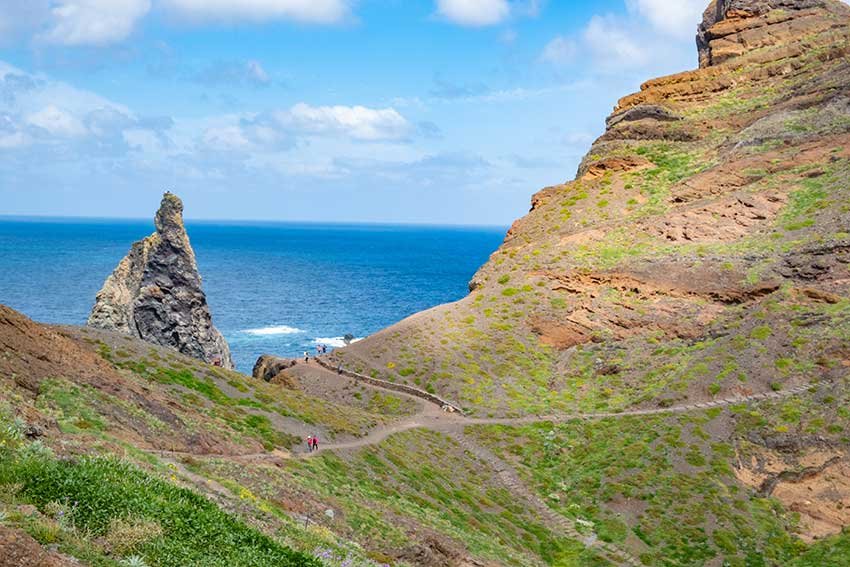
It’s a 6 km there-and-back type of hike and takes just under 3 hours to complete. If you plan to take your camera (recommended), allow additional time for photo taking. You will need it!
It is classified as a moderately difficult hike, probably primarily due to steep stairs and paths winding up and down, often at the cliff edge. I personally didn’t find it too difficult and have seen hikers of all ages and fitness levels taking the trail.
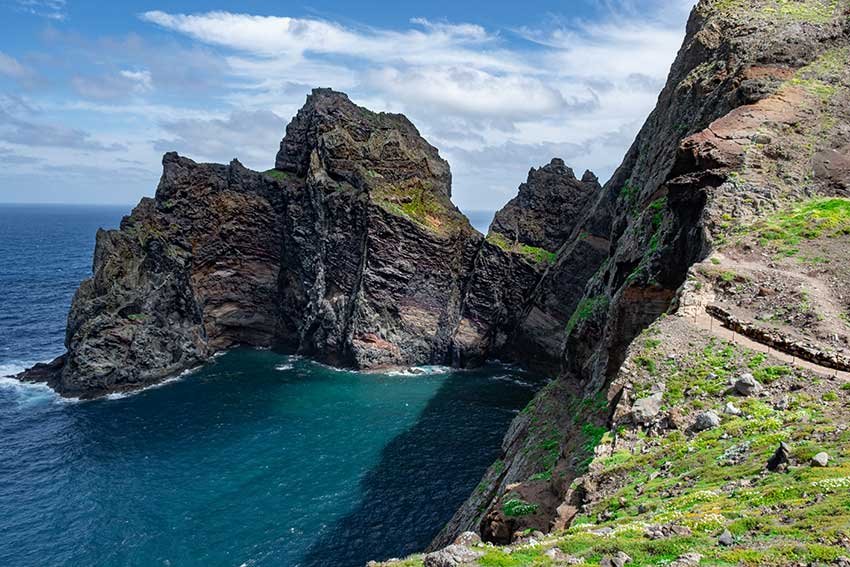
Be aware, however, that this region of Madeira is both sunny and windy, and there is no shade on the trail. Gear yourself up with a sunhat and plenty of water.
At the bus stop, you will find a small kiosk offering drinks and snacks as well.
The trek ends at Sardinha house, the base for a group of Rangers who work for the Madeira Natural Park. You can stop there for a drink on your way back. When I was there, there was also an option to take a boat back for 10 euros, taking you around the peninsula.
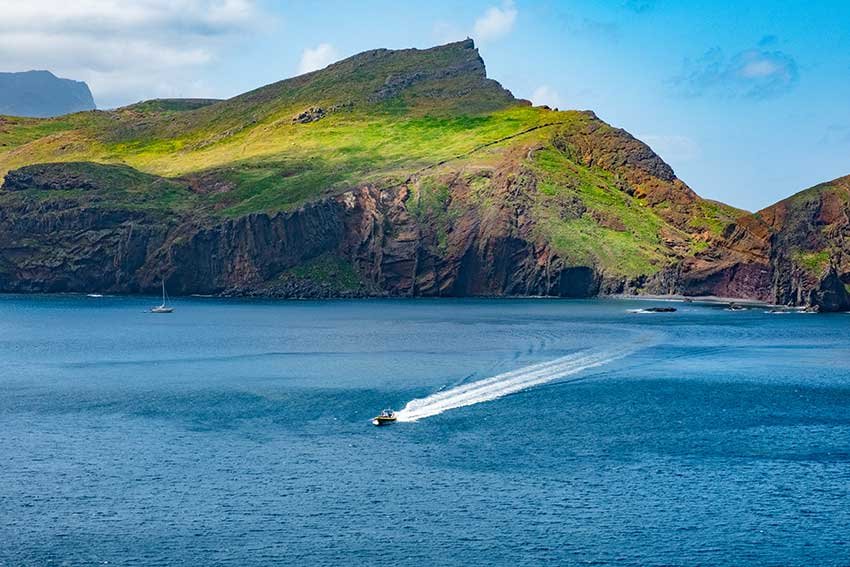
I was definitely tempted, but decided to walk back instead.
The combination of dramatic ocean cliffs, unusual land formations, and panoramic views makes this one of the most memorable walks you’ll ever do. Don’t miss it!
Vereda do Larano
Vereda do Larano is one of the most spectacular hikes in Madeira, yet for some reason, you’ll hardly find it mentioned in most walking guides.
The trail starts with Levada do Caniçal, which leads up to the Boca do Risco viewpoint before turning into the breathtaking Larano coastal path.
Some guides describe this hike as difficult. If you suffer from vertigo or are really afraid of heights, I wouldn’t recommend it. Otherwise, it’s not too challenging. The path is clearly marked, wide enough to walk comfortably, and the narrowest parts are fitted with railings.
I apologise for the poor (or strange) quality of photos in this section. I unfortunately lost my camera photos from this hike and only found a couple I took with my phone camera for some reason. I am gutted, I must admit.
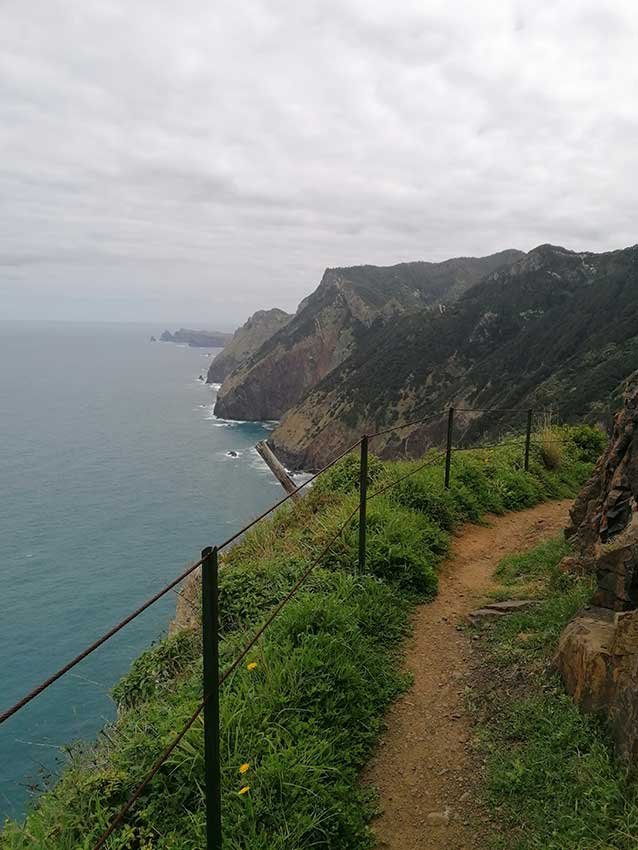
I’ll admit—there was one point where I chickened out, decided not to look down, and missed what could have been an extraordinary photo opportunity. But apart from that, this trail was one of the best hikes I’ve ever done.
How to get there by bus
The best way to start Vereda do Larano is from Machico. Take a bus towards Caniçal and get off just before the tunnel (the same bus that goes to Baía d’Abra and Ponta de São Lourenço). If you’re unsure, just ask the driver—they’ll point out the stop for you.
You can also walk up from Machico town centre, but the climb is long and steep. Considering the length of the full hike, I recommend saving your energy and getting there by bus or taxi.
If you’re travelling directly from Funchal, I suggest catching the earliest possible bus heading to Baía d’Abra. It’s also bus 113 departing at 7:15 am.
At the end of the trail, in Porto da Cruz, you can take bus 208 or 53 back to Funchal. Keep in mind that the last bus usually leaves around 6 pm, but always check the timetable as it can change.
Practical info
- Bus 113 to Caniçal, return from Porto da Cruz, bus 208 or 53
- Duration from Funchal: around 1.5 hours (depending on the route)
- Ticket price: €4.00
Vereda do Larano overview
The first 3 km follow Levada do Caniçal, which isn’t the most exciting part. Don’t miss the turnoff to Boca do Risco (it’s easy to walk past it—I did the first time). You’ll find it about 3 km from the starting point. From there, the trail climbs gently on a well-marked path, and the views quickly become spectacular.
Once you reach Boca do Risco, you’ll be rewarded with fantastic views over Madeira’s northeast coast. Many hikers end their walk here and return the same way, which is definitely an option. But if you continue, you’ll follow a dramatic cliffside trail for another 5 km towards Porto da Cruz.
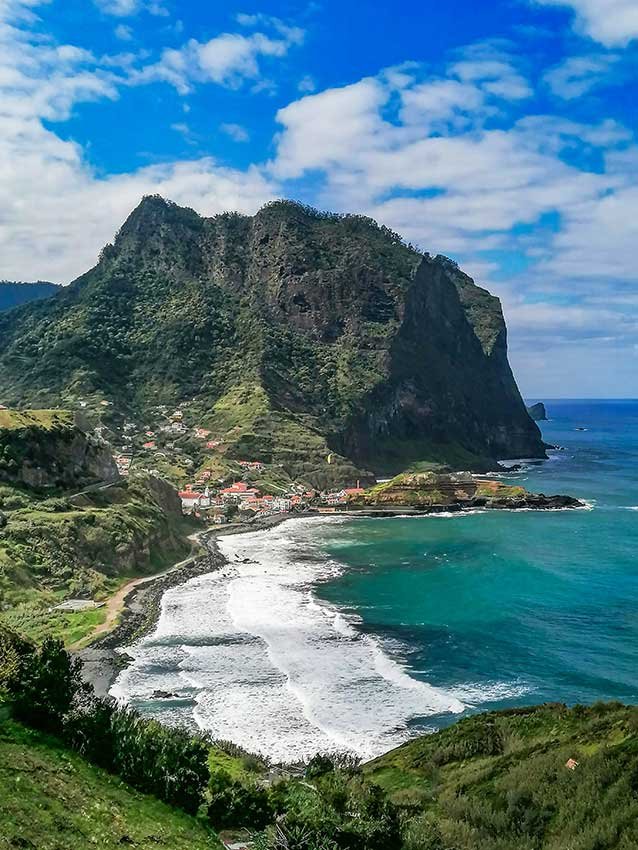
The final stretch takes you down a paved road into Porto da Cruz, where you can stop for a well-earned meal—or a glass of poncha. From there, you can catch the bus back or grab a taxi.
The full hike point-to-point is about 13 km and usually takes 4 to 5 hours, depending on your pace and breaks.
Levada do Rei (PR18)
Levada do Rei is a beautiful levada walk that takes you all the way to the head of the river, with adventurous views and stunning waterfalls along the way. It’s one of my favourite levadas in Madeira, and I really enjoyed this trail.
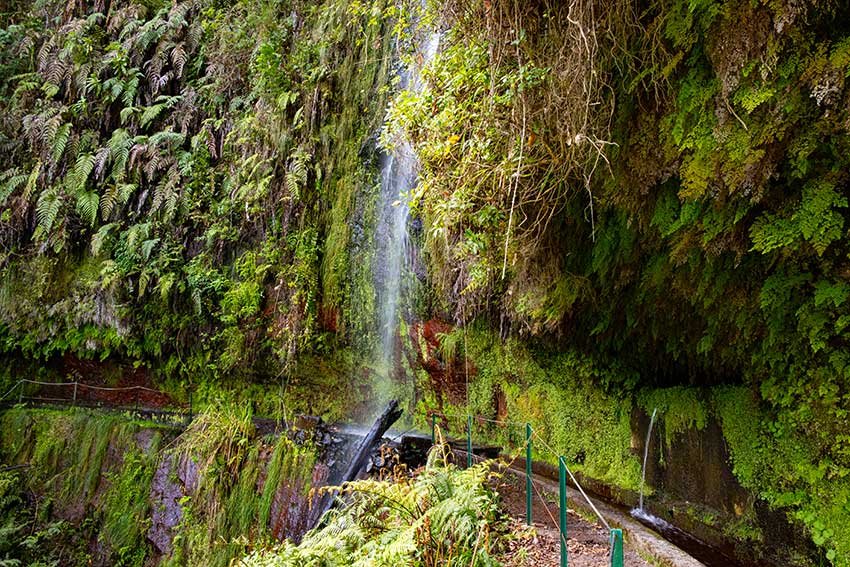
How to get there by bus
The easiest way to reach Levada do Rei is from Santana. Take bus number 103 (SAM company) towards São Jorge, then walk from the bus stop up to the trailhead. If you’re coming from Funchal, there’s one very early direct bus, but otherwise you’ll need to change in Santana.
A little tip from my own mistake: don’t get off at the “centre” of São Jorge, which is right at the bottom of the hill. If you stay on the bus for two more stops, you’ll save yourself a half-hour of steep uphill road walking. The correct stop is much closer to the start of the trail.
Practical info
- Bus 103 from Santana
- Duration from Funchal: around 2 hours (depending on the route)
- Ticket price: €4.00 – €5.50
Levada do Rei overview
The trail begins at the water treatment plant at Quebradas in São Jorge and follows the levada all the way to its source—the Ribeiro Bonito stream. Along the way, you’ll pass spectacular viewpoints overlooking valleys and farmland, before the path leads you into a lush, jungle-like forest.
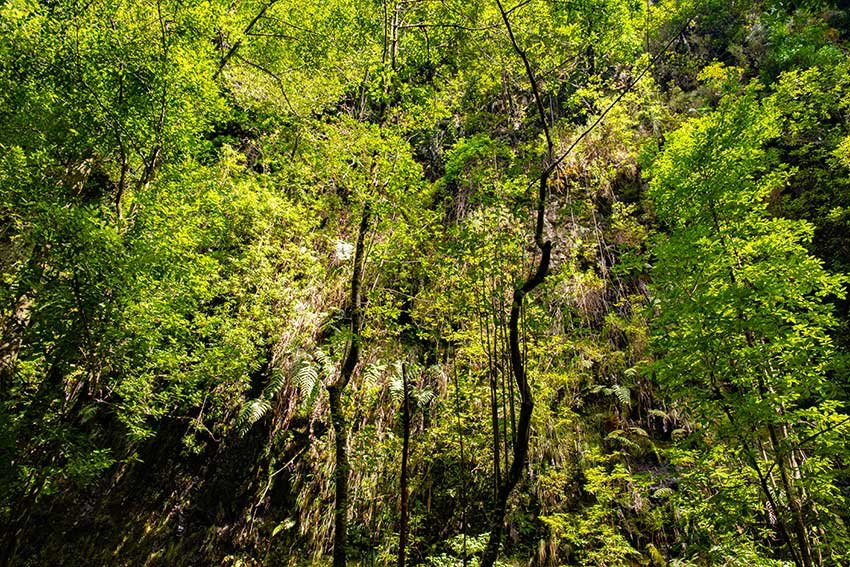
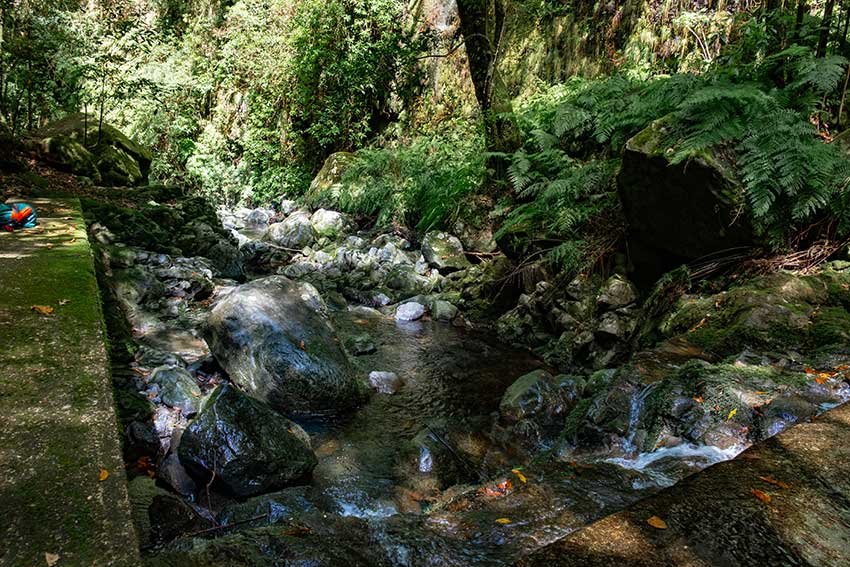
You’ll cross a few short tunnels and walk through stretches of native Laurisilva forest that feel almost Amazonian. The trail ends at a peaceful stream where you can take a break before heading back.
Levada do Rei is an 11 km round trip and takes about 3 to 4 hours to complete, depending on your pace and photo stops. It’s officially rated as moderate, though I didn’t find anything particularly difficult about it. Still, if you suffer from vertigo or have a fear of heights, there are a few short sections that might feel a bit tricky
Curral das Freiras (Nun’s Valley)
Technically, Nun’s Valley isn’t a levada or a vereda. Most visitors come here by car or bus just to admire the famous Eira do Serrado viewpoint and the spectacular valley below. But you can also turn it into a proper walk, which I did, and I can honestly say the place is magical and the walk is very much worth the effort.

It’s also extremely easy to reach from Funchal, and trust me—the bus ride itself is an experience.
Curral das Freiras (Nun’s Valley) is a village tucked away at the bottom of a huge volcanic cauldron, surrounded by almost vertical mountains right in the heart of Madeira. Back in 1566, when French pirates attacked the island, the nuns of the Santa Clara convent fled here to hide, giving the valley its name. Because of its isolation, the locals rely heavily on what they grow, and chestnuts play a big role in the cuisine here. They’re delicious and used in everything from soups to desserts, long before rice became part of the diet.
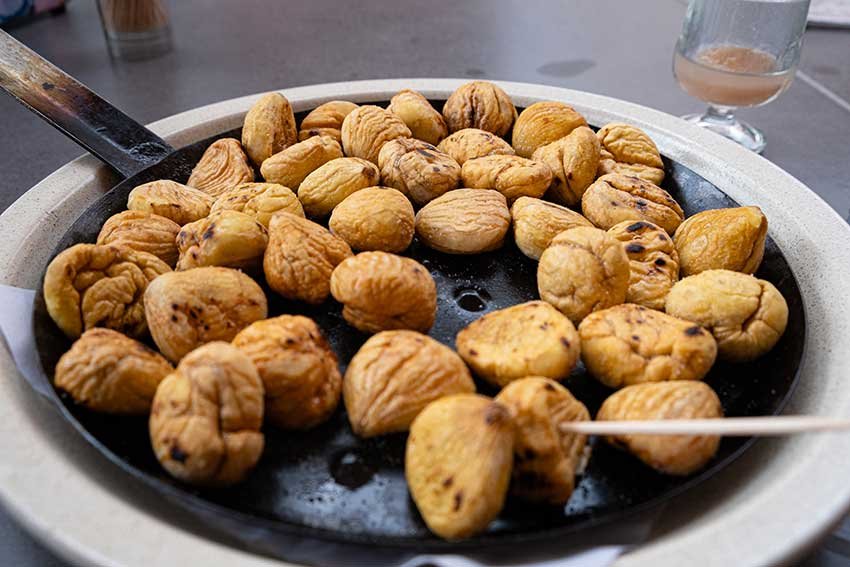
How to get there by bus
Getting to Nun’s Valley couldn’t be easier. Take bus number 81 (SAM company) from in front of Palácio de São Lourenço, opposite FX Sports Bar on Avenida do Mar in Funchal. For the return, you can catch the bus from either the same spot in town or from the valley itself.
Practical info
- Local bus 81
- Duration from Funchal: about 40 minutes
- Ticket price: €4
Nun’s Valley overview
I recommend getting off at Eira do Serrado first. It’s one of my favourite viewpoints in Madeira, sitting at over 1000 m above sea level, with jaw-dropping views over the valley. It can get chilly up there, so bring a jacket.
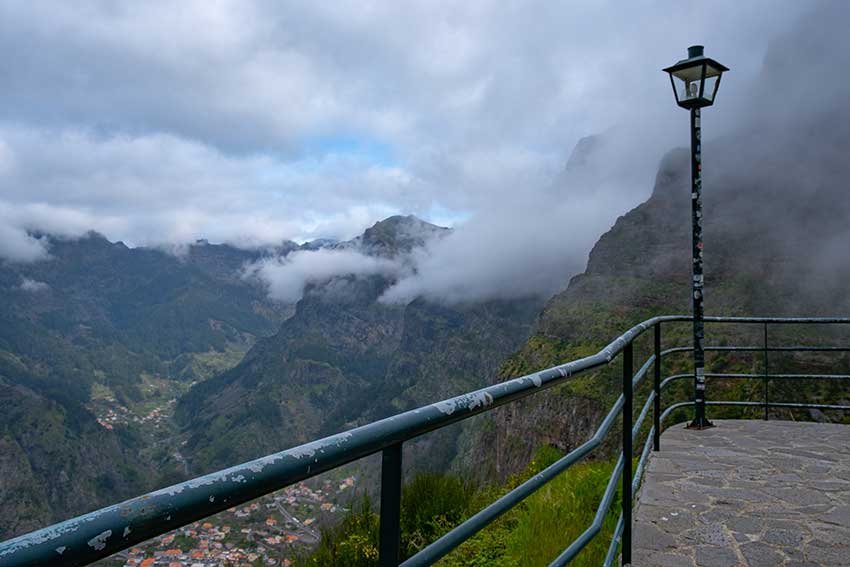
From this viewpoint, you can hike down a steep but scenic trail into the valley. It takes around 45 minutes, and while the path is sometimes wet and slippery, it’s manageable if you wear proper shoes with good grip.
The village itself is small and a little sleepy, but I found it very charming. There’s a small museum where you can learn about the nuns’ lives, and several restaurants serving chestnut specialities like soup, cheesecake, roasted chestnuts, and even chestnut liquor. Definitely try at least one of them.
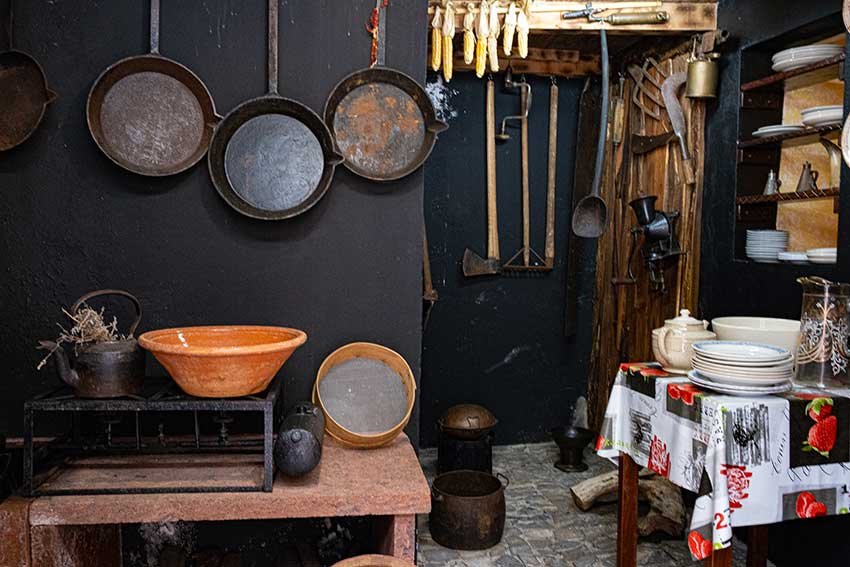
If you want to continue exploring, walk down to Poço dos Chefes, a natural swimming spot in the stream where locals gather in summer.
The village is also a starting point for several hiking trails. The most popular is Vereda do Urzal, which eventually connects to PR 1.3 Vereda da Encumeada and even Pico Ruivo. For the hardcore hikers, there’s also a 17 km trail from Curral das Freiras up to Pico Ruivo, climbing over 1000 m in elevation—definitely not for beginners. Other lesser-known trails lead to Boaventura, Corticeiras, and Caminho das Voltas, but these are not well-marked or documented, so I wouldn’t recommend doing them solo.
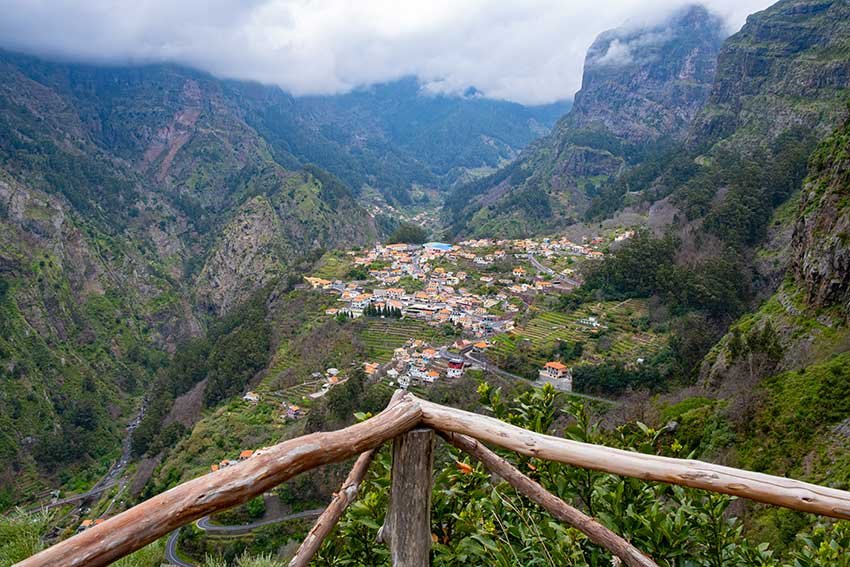
No matter what you choose, Nun’s Valley is a unique and fascinating part of Madeira that you really shouldn’t skip.
Levada do Norte
Levada do Norte starts above Câmara de Lobos in the village of Estreito de Câmara de Lobos and is one of the largest and most important levadas on the island. Because it’s located in the south, it can be walked year-round. The trail stretches all the way to Cabo Girão, offering sweeping views over the parishes of Câmara de Lobos and Campanário.
The bus stop is just a few meters from the hike entrance, which makes it easy to reach. Opinions on its difficulty vary, but be aware that parts of the path run alongside steep drops. If you suffer from vertigo or are uneasy with heights, keep that in mind before setting off.
You can either start or finish the hike at Cabo Girão Skywalk, which is spectacular in its own right and definitely worth visiting while you’re in Madeira.
How to get to Levada do Norte by bus
From Funchal, take bus 96 to Estreito de Câmara de Lobos and get off near the Continente supermarket at the village’s main square. If you’d rather begin at Cabo Girão, take bus number 7 towards Ribeira Brava. Note that not all buses stop at Cabo Girão, so it’s best to double-check the timetable before you go.
Levada do Norte overview
At the start of the walk, you’ll be treated to fantastic views over Câmara de Lobos and Campanário. From there, the levada winds through a long valley and crosses the road several times—so watch out for the path markers to avoid missing your way.
You can make this a simple there-and-back hike or follow the trail until it meets the road to Cabo Girão, where you can hike up to the skywalk and enjoy one of the highest viewpoints in Europe. There are buses back to Funchal from Cabo Girão, but they don’t run frequently, so check ahead of time.
If you stick to the there-and-back option, the walk is just under 16 km with about 720 m of elevation gain. You don’t have to do the entire trail, though. A popular choice is to start at Cabo Girão and walk to Boa Morte, which makes for a shorter but still scenic section.
Do note that some parts of the path are exposed with abrupt drops, so take care. If you’d rather not go it alone, you’ll also find organized hikes that combine this route with a stop at Cabo Girão.
Levada do Caldeirão Verde (PR9)
Levada do Caldeirão Verde is meant to be one of the most beautiful Levada hikes in Madeira. However, I did not manage to walk it. At the time when I was based in Santana (which is ideally located for this trek), the weather had gone awful, and a bad storm had prevented me from doing this hike. I am gutted, but hey, I guess I will have to return and do this one next time 🙂
Levada do Caldeirão Verde is partially accessible by public transport, but it should definitely be on your to-hike list.
How to get to Levada do Caldeirão Verde by bus
To get to Levada do Caldeirão Verde, take bus 56 from Funchal to Santana. From there, unfortunately, you would either have to walk to the head of the trail (1.5 hours) or take a taxi from Santana to Queimadas, which I personally recommend.
Caldeirão Verde is a very popular Levada, so if you prefer, you will be able to find an organised tour as well.
Levada do Caldeirão Verde overview
Levada do Caldeirão Verde is a 13km there and back hike starting at the elevation of 990m. It takes around 5 to 6 hours to walk the whole length and to return.
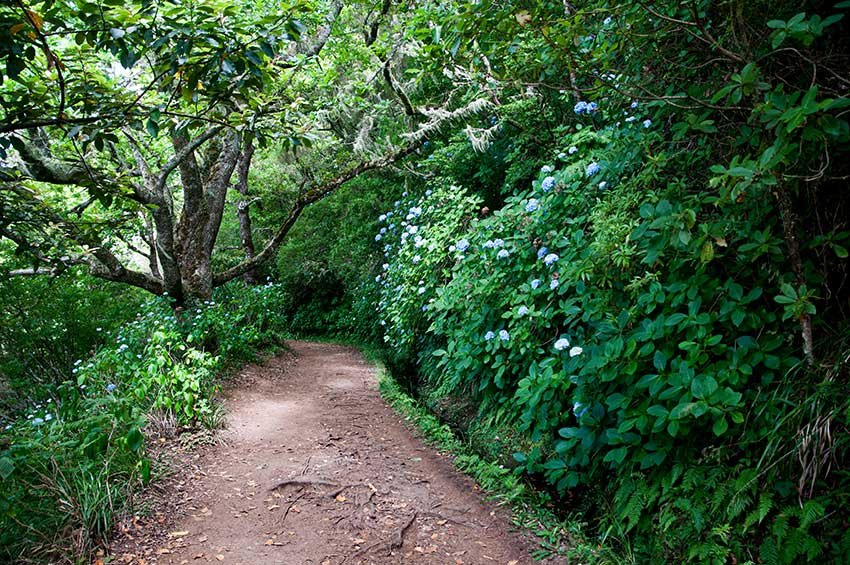
This Levada is an impressive work of art built in the 18th century. Levada do Caldeirão Verde starts at the bottom of Ribeira do Caldeirão Verde river near Santana and crosses steep hills and mountains.
It then goes into the deep valley of Ribeira de São Jorge, offering a spectacular view of the mountains and the possibility of passing through man-made tunnels carved in the rock. Do not forget a flashlight – you might need it in the tunnels.
This Levada is like a fairytale walk amongst waterfalls and lush green forest. At the end of the Levada, you will find yourself arriving at e huge waterfall falling on the cold and crystalline lagoon. Great place for a short picnic before returning.
Caminho do Paúl do Mar, Jardim do Mar, Ponta do Pargo
You can get by bus to both Paul do Mar and Jardim do Mar, and whether you decide to walk the hike or just visit the village, it will be worth it. You can also go all the way to Ponta do Pargo and visit the lighthouse and do some hiking there.
This is a great part of the island, and there are few walks located in the area.
The most popular one is the Caminho do Paúl do Mar, part of the greater Caminho Real trek. It will take you down steep stairs to the Paul do Mar village. It is graded as moderate, but I have heard many opinions saying it is pretty hard and challenging. The person I met in the hostel who did this part of the trek said it was very hard and not that exciting for the effort.
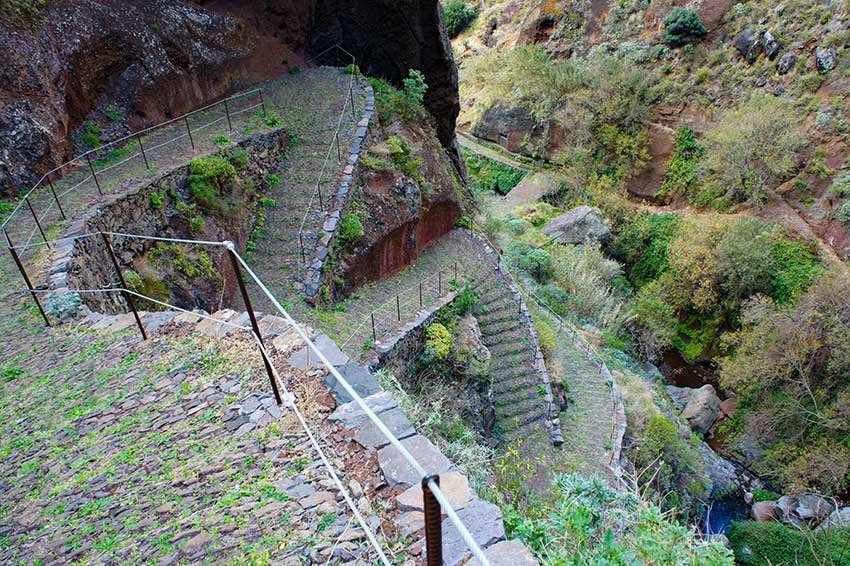
A much better walk to take in the area is the Levada do Ponta do Pargo, which starts at Ponta do Pargo in the Pedregal and will take you to Lombada Velha. This walk will take you into the forest but will also offer incredible views of the sea cliffs.
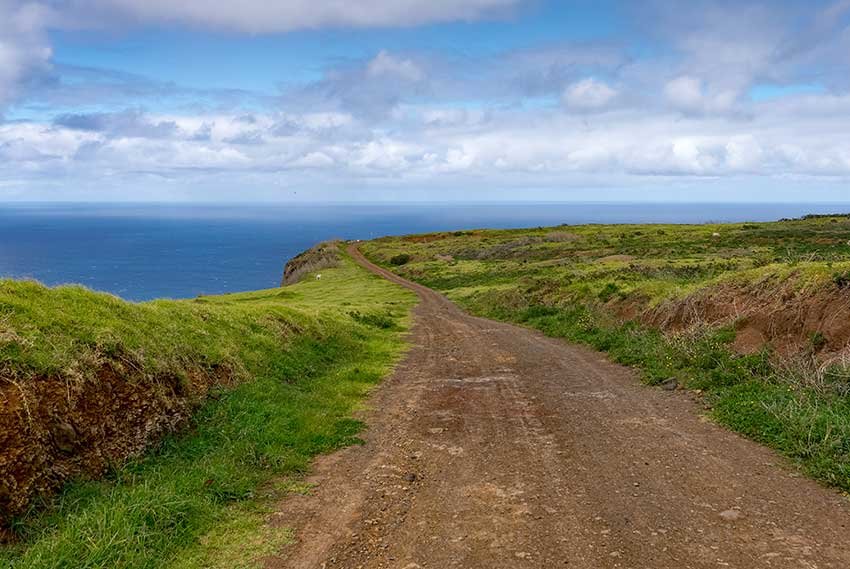
It is a loop hike 10.5 kilometres in length and takes approximately 4 hours to complete. I recommend adding an extra couple of hours to visit the Garganta Funda waterfall.
It is a pretty pleasant hike, with a total incline of around 500m.
How to get to Paul do Mar and Ponta do Pargo by bus?
The bus 142 by Rodoeste from Funchal will take you all the way to Ponta do Pargo. It leaves around 8 in the morning from Funchal, and it takes under 3 hours to get there, so plan your day accordingly. The return bus is just after 5 p.m., which should give you over 5 hours to explore.
Bus company – Rodoeste, bus number 142
Duration from Funchal – 3 hours
Ticket price – €4
Where to next?
Done with hiking and want to take some cool day trips for a change? There are some awesome day trips you can take from Funchal, also by public transport! Be sure not to miss Camara de Lobos, wonderful Santana, or take a day trip to the west of the island to see the spectacular Porto Moniz!
Fancy a few days by the beach? Then you can’t miss chilled Machico with its own golden sand beach!
Staying in Funchal? Here you will find a list of great things to do in Madeira’s capital city and I have a separate list of things to do in Funchal when it rains!
If you are wondering where to stay in Madeira, I’ve got you covered in this post and here you will find a comprehensive list of all the spectacular things to do and places to visit in Madeira!

